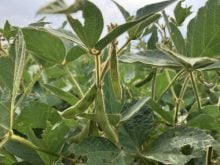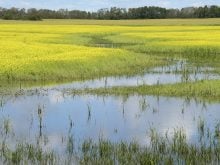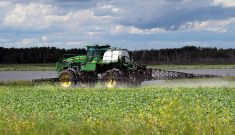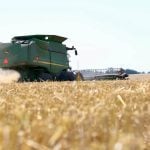Farmers will likely live with the legacy of this past season’s excessive rain for the next several years.
The deep ruts and packed fields will not disappear overnight, said Miles Dyck, an assistant professor from the University of Alberta.
Dyck said wet soil can cause compaction in heavy clay soil.
Soil particles are forced together when wet soil is compacted, forming dense clods and reducing the size of the pore space between the soil particles for air and water filtration.
Read Also
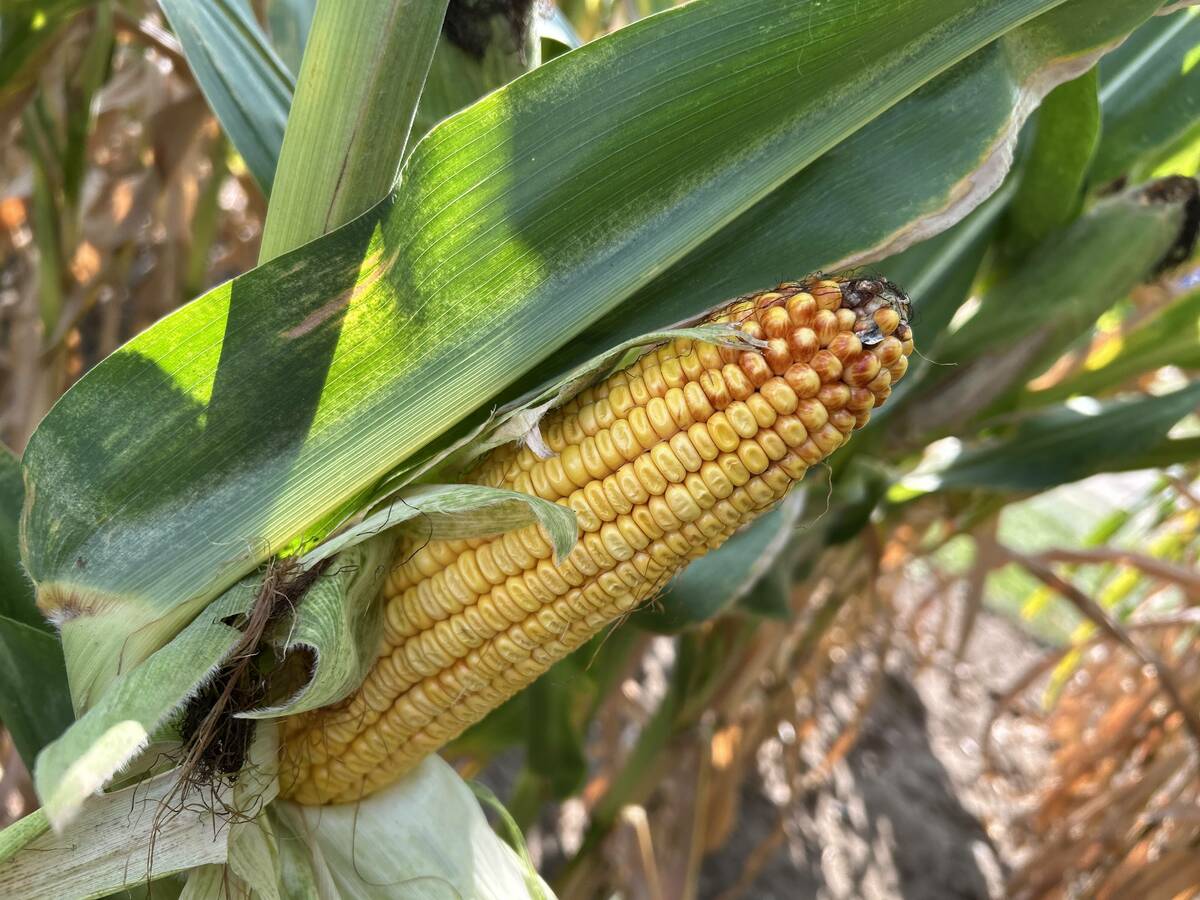
Crop estimates show mixed results
Model-based estimates used by Statistics Canada showed the 2025/26 crop year has seen increases in canola, corn for grain, oats and lentils production while seeing dips in spring wheat, durum wheat, soybeans and barley in comparison to 2024/25.
Most soil comprises 50 percent solid material and 50 percent pore spaces.
Soil compaction can limit crop emergence, root penetration and water filtration into the soil and depress yield.
Dyck, who works in the university’s renewable resources department, said the jury is still out on how best to eliminate ruts and compaction in fields.
Farmers can use their old cultivators and discs to try breaking up the ruts, or they can hope the winter’s freezing and thawing action will naturally break up the clods.
“Sometimes it may take three to five years to rebound,” he said.
Dyck said limited research is one of the biggest problems when assessing soil compaction.
“There’s not a lot of research funding available to study compaction now.”
He said there is no simple way to measure if soil is compacted. Most compaction complaints rely on anecdotal evidence.
Soil penetrometers can measure compaction, but the long probes with pressure gauges at the ends must be used correctly to be of value.
Some farmers have recently become interested in controlled traffic farming, in which all farming equipment is driven on set tracks.
It’s estimated that under normal traffic systems, most areas of a field are driven over at least once a season by some kind of implement. Dyck said it would likely take three to five years of research to see if the benefits of controlled traffic farming work on the Prairies.
“It would have to be a pretty significant increase to take over production in normal traffic systems,” he said.
Ross McKenzie, a research scientist with Alberta Agriculture in Lethbridge, is not convinced soil compaction is a big problem.
“We don’t generally have a soil compaction problem.”
He doesn’t believe controlled traffic farming is a trend most farmers should be adopting.
“I am dead set against it,” said MacKenzie. “If you don’t have compaction before, you will now. I am opposed to what they’re saying and promoting before the research is done to say it works.”
Instead, McKenzie and Dyck believe one of the easiest ways to avoid soil compaction is to adopt good crop management techniques that promote good soil residue and organic matter
“If you have nice spongy material that protects the soil from wind and water erosion, it also protects it from compaction,” Dyck said.
MANAGEMENT PRACTICES TO PREVENT SOIL COMPACTION
• Use direct seeding practices to increase soil organic matter to optimize soil structure
• Eliminate cultivation and reduce traffic in fields, which will increase water use efficiency
• Take advantage of the natural soil processes of wetting-drying and freeze-thaw cycle
• Use a combination of fibrous and tap rooted crops in a rotation to penetrate soils
Source: Alberta Agriculture



